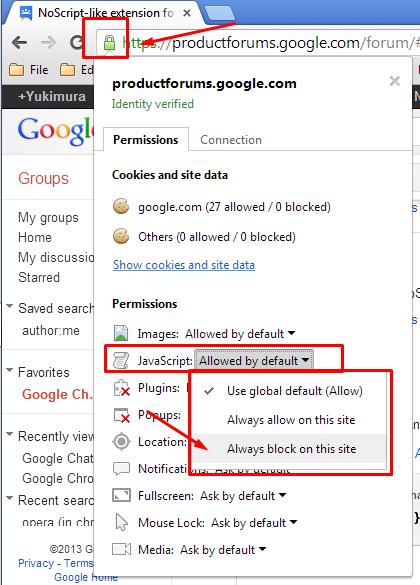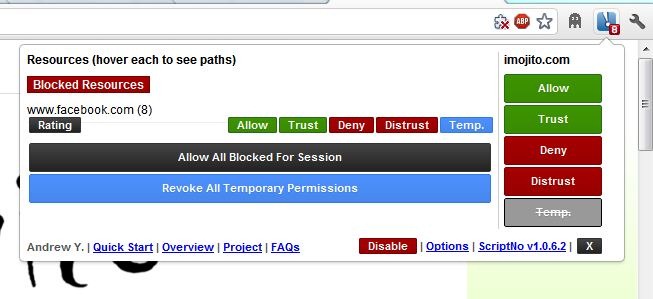
There are other optimizations, and even other previews (like the LOFI preview which will load image placeholders instead of actual images). There is also a short period (about 5 seconds from the looks of it) where Chrome will decide not to use the intervention from any site if a user has recently opted out.Īnother wrinkle is that the NOSCRIPT intervention is far from the only option Data Saver has to reduce page bloat. I’m not clear on all the ways those lists can be populated, but it does look like if the user opts out of the same host often enough, the host will be added to the preview blacklist. It appears that there are lists on the browser side as well as on the user side. The reality is it’s a little more complex than that.įor one, there is a whitelist and blacklist that can opt domains in or out of this optimization. If the network is slow and the user has made the decision to get let Chrome help them out in those situations, you’ll get the NOSCRIPT intervention. On the surface, the decision to apply the intervention seems straightforward. For testing purposes, you can force Chrome to always view the ECT as a 2G network using the #force-effective-connection-type flag I mentioned earlier. In real use, Chrome will use the Network Information API to determine if the effective connection type (ECT) is 2G or slower and, if it is, use the NOSCRIPT intervention. If you want to see the intervention in action, you’ll need to make sure Data Saver is running (Chrome > Settings > Data Saver).


The intervention kicks in when two criteria are met (it’s a bit more complicated than that, but we’ll get to that in a minute): You’ll also need to set the #force-effective-connection-type flag to ‘2G’ or slower. #enable-optimization-hints should be disabled (we’ll come back to that later). #allow-previews and #enable-noscript-previews must each be enabled.
#NOSCRIPT FOR CHROME ANDROID#
To toggle the flags, open Chrome on your Android device and navigate to chrome://flags. Once it’s enabled by default on Android, which presumably will happen in Chrome 69, this won’t be necessary. To test the intervention, you’ll need to toggle a few flags to make sure you can see the NOSCRIPT preview. Provided your site works without JavaScript, I can click from page to page, reading articles or shopping for the product I want to buy. When I first read about the intervention, I had thought the preview was some sort of static snapshot, but it’s fully interactive. When the click on the information bar, the original page will be downloaded and displayed-JavaScript included. The browser will do all the rest of the work necessary to display the page and present it to the user, with an information bar informing the user that the page has been modified to save data and giving them the option to view the “original”. (Though it does appear that if a service worker has been installed for the domain, it will still execute). External JavaScript files will not be requested, and inline JavaScript will not be executed.
#NOSCRIPT FOR CHROME DOWNLOAD#
When the preview is enabled, the browser will download any necessary resources to display the page except for any JavaScript.
#NOSCRIPT FOR CHROME HOW TO#
It took a little digging through Blink issues, but I eventually figured out how to reliably fire up the NOSCRIPT preview so that I could test it out. However, all the articles I had read were speculating on what the intervention would look like, not what it does. JavaScript, however, isn’t always treated as progressive enhancement (as much as I feel it should be) and so when it goes missing, the consequences can be a bit more significant.Īs you would expect, then, there’s been a lot of ensuing conversation. Web fonts fallback very easily to system fonts so disabling web fonts is not a huge deal to most.

From the looks of it, it’s been around since January (just disabled by default until now).īut disabling JavaScript is a much more controversial move, it appears. The NOSCRIPT intervention itself isn’t even new. Chrome has several interventions including one that can replace images with placeholders and one that bypasses web fonts on slow connections. Chrome intervening on behalf of the user when it feels the network is iffy isn’t exactly new. The other week, there were a few articles that came out about Chrome’s NOSCRIPT intervention: an intervention that would disable JavaScript altogether on slow networks.

# performance chrome mobile javascript progressive enhancement Chrome's NOSCRIPT Intervention September 6, 2018


 0 kommentar(er)
0 kommentar(er)
